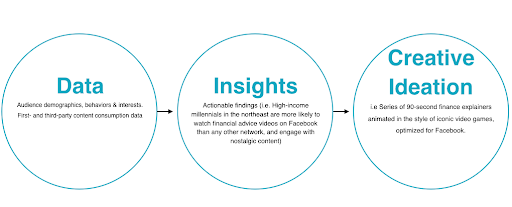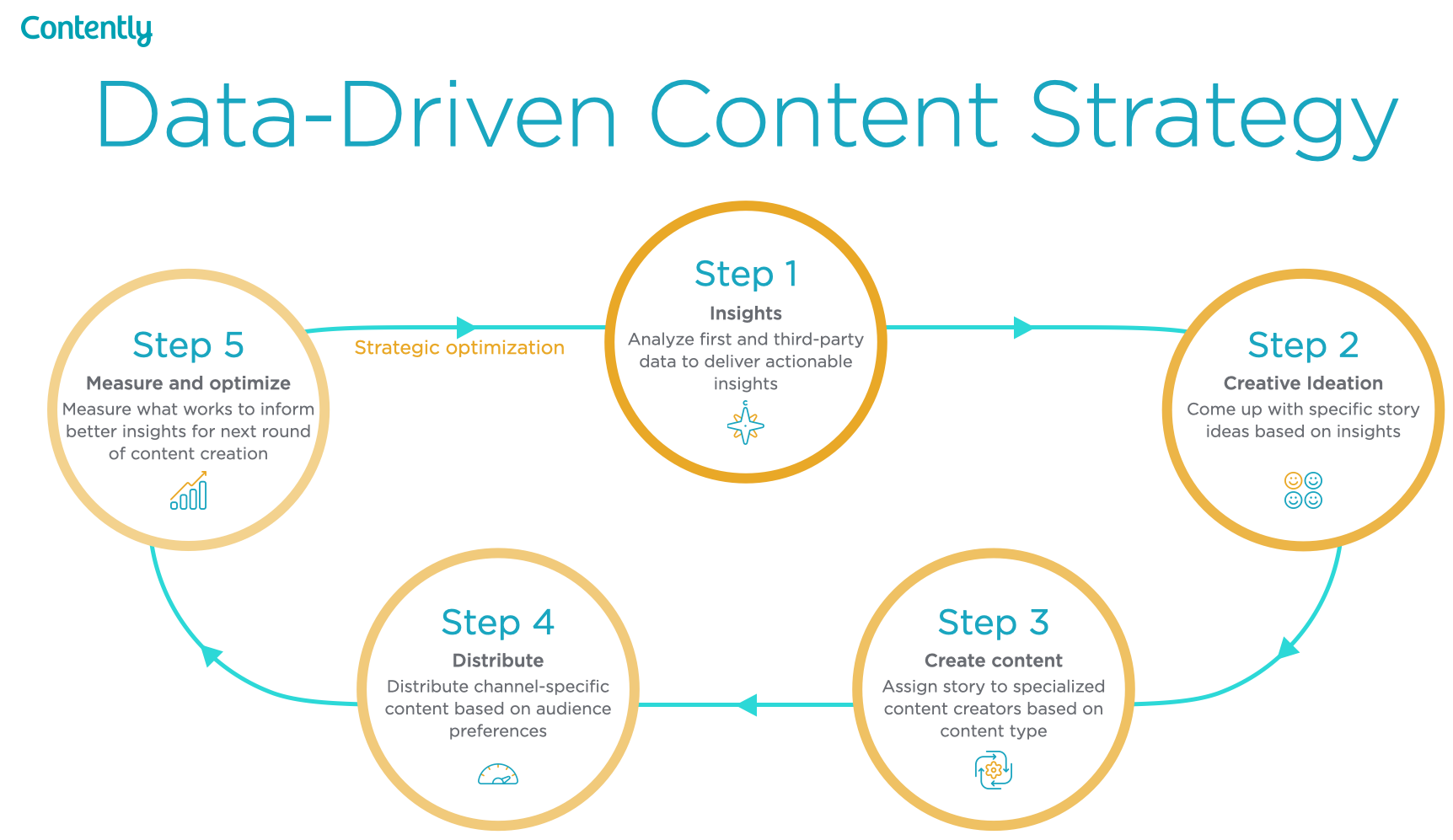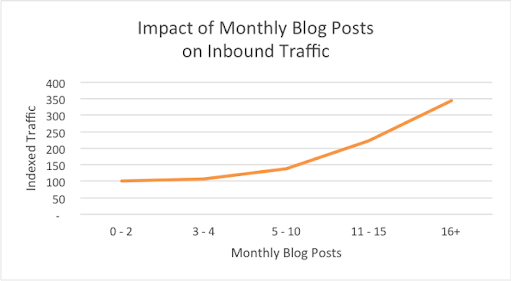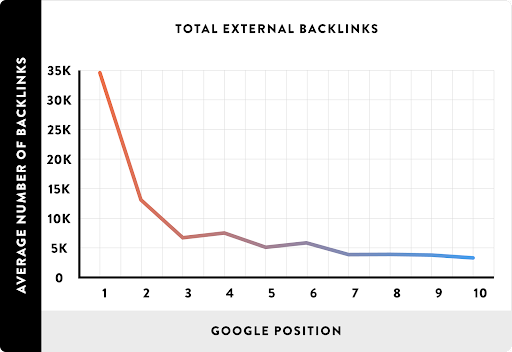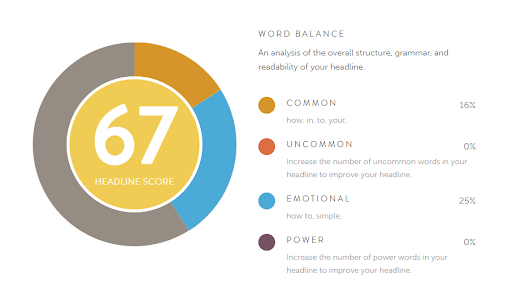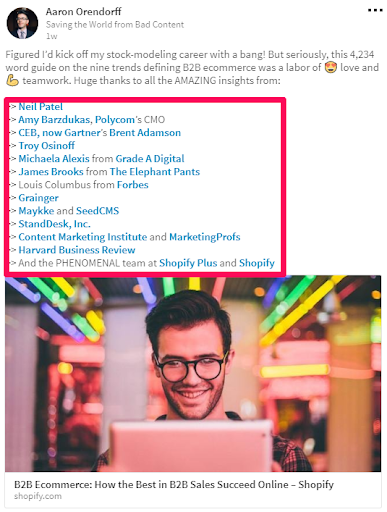Data can aid in identifying target audiences and trending topics, channel-specific preferences of potential customers, and the influencers most relevant to those groups.
Brillmark believes in leveraging data insights to identify new business opportunities, better serve customers, grow sales, improve operations, and more, enabling organizations to make evidence-based decisions and carefully plan to pursue business objectives.
Want to stand out from the crowd? Well-written, attention-grabbing content can help.
Curated content can also generate loyal customers who want to continue doing business with you.
It is the holy grail of any marketing strategy and is commonly referred to as Content Marketing.
It will be more important than ever to generate valuable insights from data and apply the findings to your Content Marketing strategy.
How does one achieve these findings?
Create demand and meet a need using data rather than guesswork.
Create a clear plan outlining your data-driven approach’s purpose, audience, and overarching business goals.
Data-driven strategies use data to forecast trends, needs, and activity, allowing you to make more informed content decisions.
Data is the foundation of every successful content strategy.
There’s a reason why the phrase “data-driven content marketing” has gained popularity in recent years.
You can’t rely on intuition and guesswork in today’s competitive business environment; doing so will only burn through your resources and lead you nowhere.
Data should be the fuel that powers your marketing engine, regardless of whether you run a small business or a large corporation.
You can develop a successful content strategy to help your company generate more leads and conversions if you use data to guide every decision.
How do you get to know which strategy is the most efficient one?
This blog post will discuss ideas for creating a data-driven content marketing strategy.
You’ll also learn what it means to be data-driven, why it’s essential, and how to implement it at your own company successfully.
What is data-driven content marketing?
According to Digital Authority, “Currently, 95% of B2B tech marketers use content marketing actively, and 75% intend to increase it over the coming year,”
A strategy for creating and implementing content that heavily relies on data insights is known as a data-driven content strategy.
Instead of relying on gut instinct or guesswork, all content decisions are based on data obtained through research and analytics.
A data-driven strategy aims to boost content performance and guarantee favorable audience reception.
A proactive data approach to content creation for tech companies cuts down on time wasted brainstorming for content that doesn’t meet your objectives.
Instead, you can create strategic content based on understood audience behavior and results by using the data you have gathered about your audience and industry.
How does data impact your content marketing strategy?
According to the most recent Content Marketing Institute (CMI) data, “only 43% of B2C content marketers are confident in their content marketing success.”
You might want to gather data that includes demographics, psychographics, and information from social media in the business-to-consumer (B2C) market.
The information assists businesses in honing their marketing messages and incorporating promotions related to the market segment where their ideal clients are found.
Before implementing a data-driven Content Marketing strategy, you must establish your goals.
A content marketing strategy’s main objective is to develop a relationship with your audience by producing valuable content.
You can access suitable data sources once you establish your objectives.
How to collect data For Data-Driven Content Marketing
To deliver the research, you can hire a data-mining company or collect the data on your own using various techniques.
Techniques for case studies, surveys, and information you’ve already gathered may include the following strategies:
- Run competitive analysis that identifies customer issues and the remedies provided by your rivals to address these issues or opportunities.
- Utilize SEMRush and Google Analytics to conduct keyword research. This provides information on customers’ methods to research the goods and services they require or want in the market you serve.
- Look into market statistics and trends. These statistics are available on media and business websites like Forbes, Statistica, and Kissmetrics.
- Gather information from your websites, such as your Google ranking, the number of people who visit it, social media shares, and click-through rates (CTR).
- Gather information from email autoresponders that offer data on email open rates and the total number of email addresses collected, such as Mailchimp.
- To learn more about the demographics, develop a buyer persona.
- Additionally, please find out more about the psychographics of your target market to understand what matters to them and how they make purchases.
You can reach out to Brillmark to compare and prepare data for you!
The Importance of Data-Driven Content Marketing
According to Google, “Nearly two-thirds of top marketers believe that data-driven decisions are superior to those based solely on intuition,”
Companies have a better chance of turning prospective customers into paying customers by using the data behind a buyer’s journey and a targeted marketing strategy.
You do not want to spend time, money, and effort on unsuccessful digital marketing campaigns.
Businesses can get a clear picture of the purchasing patterns of their customers through data-driven analysis in a specific market.
Thanks to that information, they can tailor their sales and marketing strategies directly to their target audience.
Utilizing the data to determine which marketing channels are performing the best is an additional benefit of using a data-driven content marketing strategy.
Join us as we discuss the important points of why a data-driven content marketing strategy is essential to your business.
To get the best ROI
Your content’s visibility will improve as a result of data. You can select and use the appropriate publication and distribution channels.
You will also generate more leads and sales by providing a more personalized experience for your audience.
Save money
Data-driven decisions reduce the risk of wasting resources on dead-end projects.
Instead of wasting time forever brainstorming, you can use specific data to develop content ideas.
Spending time, money, and effort on unsuccessful digital marketing campaigns is not something you want to do & data-driven activities can help you on this journey.
Great branding and search engine optimization
Each piece of content you publish will be of high quality and relevant to the needs of your audience if your research is thorough.
Visitors will continue to visit your website due to the enhanced brand recognition and company image.
For most content marketers, dominating the SERPs is the ultimate goal. However, SEO is becoming more complex.
You must conduct more extensive keyword research if you want to rank and keep ranking.
Your content must be worthwhile, reliable, and suited to the requirements of your users. And to do that, you need data.
Sustainable content marketing
You’ll know what to write, where and when to publish it, and how much content you’ll need overall to be successful.
Additionally, distribution and optimization will allow you to utilize all of your current components fully.
Your content strategy will become a self-refueling machine once you handle your data-driven framework.
Strategies for data-driven content marketing
You might want to gather data that includes demographics, psychographics, and information from social media in the business-to-consumer (B2C) market.
Along with other data sources, CES (customer effort scores) and Net Promoter Score (NPS) are also essential data that can be gathered.
Data analysis will allow you to identify consumer segments with comparable preferences, behaviors, and inclinations.
What kind of information should you gather, and how is it done? Most importantly, how can you use your study to enhance outcomes?
Let’s go around these tried-and-true, data-driven strategies that will boost your content marketing, starting with building a foundation for all your effort.
Create Audience centric content.
Knowing your audience will help you produce content that appeals to your audience.
You are the curator of content. Aim to produce content in the formats that your audience is most likely to find engaging.
The majority of technology platforms and services demand a more significant financial investment.
Many audience members may find this a barrier because they are hesitant to invest money until they are confident that your tech solution will result in cost savings.
To identify needs before positioning your products and services as solutions to those needs, you should also use data insights.
Data insights turn the attention of your content from yourself to your audience.
Where can you locate your online and offline audience so you can genuinely connect with them? Who are you attempting to contact? What drives them, keeps them up at night, and what do they need and want?
Before starting to write a single word, you must have the answers to these questions.
If you shot arrows without seeing the target, you might hit something, but it would be unlikely and coincidental. Skipping this step is the equivalent of doing that.
Bring more descriptive ideas to your blogs.
HubSpot discovered in 2019 that marketers are 13x more likely to see a positive ROI if they prioritize marketing efforts.
Blogging is a fantastic way to attract new, natural website traffic, particularly in the B2B sector.
But blogs aren’t performing at their best.
If you blog a few times a month, you can generate a lot more traffic and excellent leads than if you don’t blog at all.
But if you want more leads and traffic, you must blog more frequently.
Imagine how many leads you could generate with 16+ blog posts if your current few posts only bring in 100.
The main takeaway is that businesses of all sizes operating in the B2B and B2C sectors can profit from publishing more engaging blog posts on a monthly basis.
Just be sure to maintain a high standard. Each post needs to meet an appropriate length and value.
Must use Link-magnet on content
According to Google, “Content and links are the top two ranking factors.”
This was confirmed by an additional Backlinko study, with the data demonstrating a direct correlation between higher rankings and the presence of more external backlinks.
The issue is that backlinks are getting more and more challenging to obtain.
It would help if you had an excellent piece of content and a lot of social media shares to get a few simple links.
It would be best if you made a concerted effort to promote them on your website and blog.
However, you can overcome the standard difficulty of link building by producing content that attracts links.
Content that easily attracts links is link-magnet content. As a result, you can concentrate more and more on the infographic tasks.
Understand niche & audience persona
Additionally, you will need to comprehend your niche and how your audience engages with your sector.
Data is essential to ensure you are marketing your company in a way your audience will respond.
For instance, you could concentrate on industry-specific customer pain points and then discuss how your services address those pain points in your content rather than creating content that sells your services.
Using data to determine what your customers want to learn, you can still achieve your goal while also putting your customers’ needs first.
Always consider your audience before you start. To determine your ideal audience, use buyer personas and data from current clients.
When you know who will read your content, you can decide what content to use and which marketing channels will most likely reach them.
Test headlines
Any content marketing strategy needs headlines, which are tricky but effective components.
Great content can perform poorly if promoted with a dull, unimpressive headline, leaving viewers perplexed or disinterested.
Thought-provoking headlines lead to multiple benefits. The right headline can increase click-through rates, and the content is more likely to circulate.
CTR is additionally an indirect ranking factor. Although it doesn’t directly affect rankings, it stands to reason that Google would prioritize the most well-liked content in the results.
Test various headlines and determine which ones your target audience prefers.
Initiate influencer marketing
Influencer marketing is an excellent way to expand the audience for your content.
Thanks to influencers, your brand can reach new audiences, benefit from word-of-mouth marketing, and engage with followers who are prepared to make purchases.
You also save time because influencers are hired to produce content.
Discover the areas of your content marketing strategy where you have the most trouble.
Which audience do you find most challenging to engage with your content? What sort of action do they refuse to take?
Influencers can fill in these holes.
Before you contact anyone, consider your objectives, KPIs, and the anticipated influencer marketing ROI.
It is better to discuss the plan and outcomes expected with the influencers to ensure mutual expectations for outcomes in the future.
Research & Data Analysis
You can track a different set of metrics for each channel.
You must comprehend how each of these metrics contributes to your overall objectives to follow and correctly interpret the results of your content marketing efforts.
Create a KPI for each metric you own and assign it to one of your goals. Do this for every channel you own.
You can use this to pinpoint your most promising channels and areas for development (both for the specific channel and your entire content strategy).
Focus on visual presentation
When it comes to content marketing, blogging is currently all the rage.
It helps you rank for specific keywords and drives new inbound traffic you would not have heard of you otherwise.
It’s an excellent complement to any customer acquisition campaign.
YouTube’s active users watch over an hour of video content per day.
These facts are the primary motivator for devoting more of the budget to video content rather than solely blogging.
Begin small and gradually increase your following and traffic until you can increase your budget and invest in higher-quality equipment.
For the time being, anyone looking to launch an online video campaign can use free tools.
Now is the time to invest in video to diversify your content and increase traffic.
Continue content improvement process.
Content optimization is one of the best ways to enhance content marketing outcomes.
Without post-publication optimization, no SEO campaign would be complete. First, rather than starting from scratch, it is preferable to build on what already works.
Second, Google’s algorithms are constantly being updated, so even if an article is ranked number 10 today, its ranking could change tomorrow.
Additionally, if you are diligent about optimization, your content is constantly current with trends in your industry and product.
Must do keyword and competitor research
Keyword and competitor research will help you understand what kind of content will appeal to readers.
You’ll also learn about industry trends, identify potential sources for new ideas, and figure out who your competitors are.
Do you already have a blog post idea?
It’s time to start researching keywords. Keyword research, when done correctly, will help you write more interesting and accurate content while increasing your chances of ranking well in search results.
Conclusion
Content marketing is your best bet for increasing ranks and generating more leads.
However, not all strategies are effective. Some are enormous time-wasters.
Use this list of data-driven tactics to generate more leads and get higher rankings.
Follow the advice from the data: Platforms experiencing exponential growth are ideal for driving traffic.
How does Brillmark help?
We can help get your content to reach in front of the correct audience.
How can we do that? By analyzing the data.
You can only deliver the most effective exit-intent messaging by continuously analyzing, testing, and gaining a deeper understanding of your user base.
BrillMark can reliably create and execute complex experiments on any device, application, or platform.
With over 10,000 experiments under our belt, we can decide if your hypothesis is valid, if it needs to be modified, or if you need to conduct additional tests.
Beyond what the testing tools provide, our specialists may construct custom audiences to further segment and compare your audience’s individual behaviors.
BrillMark can also help you evaluate the test findings generated by the testing tool, which include the measurable factors that influence the conversion rates of both the original pages and the variations we generate.
If it is determined that the translation increases conversion rate and revenue, we will assist you in applying it across your entire website.
Want more information on how BrillMark CRO testing may help your business generate more leads and revenue? Let’s talk about testing or schedule a 30-minute appointment on our calendar.












